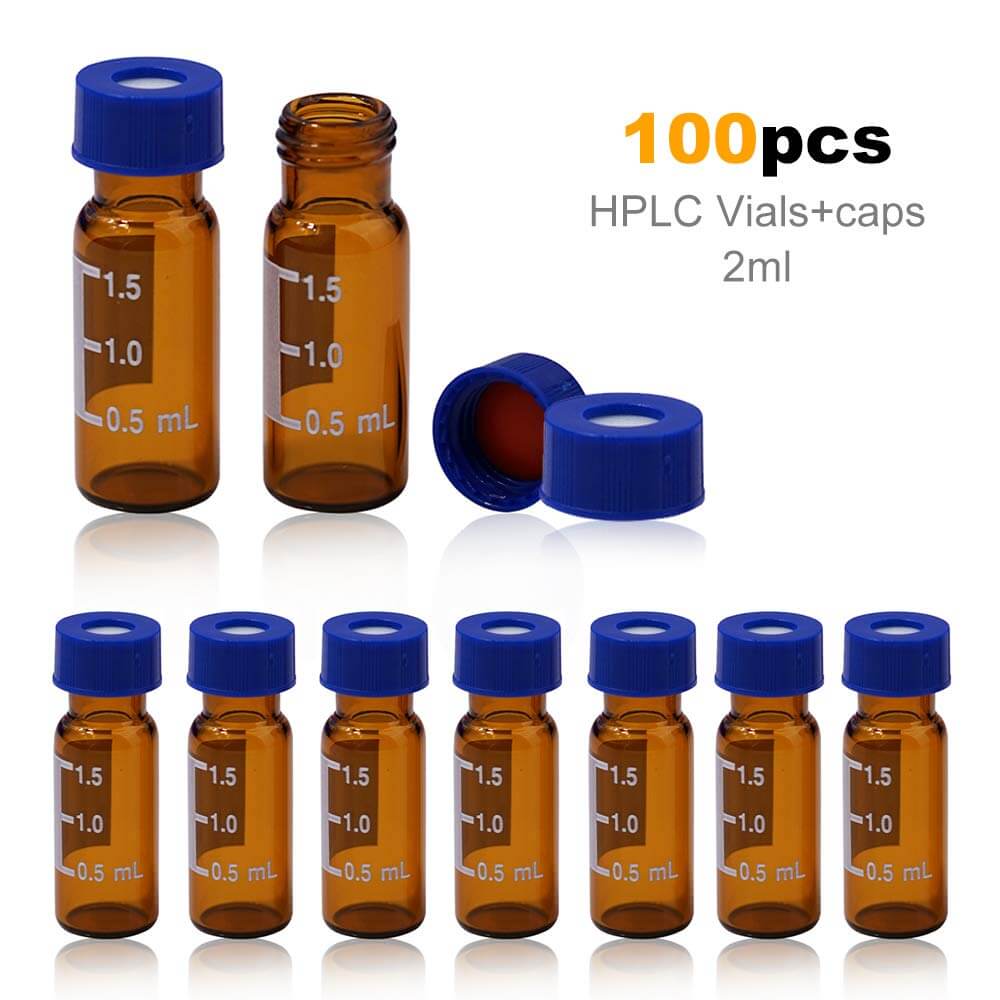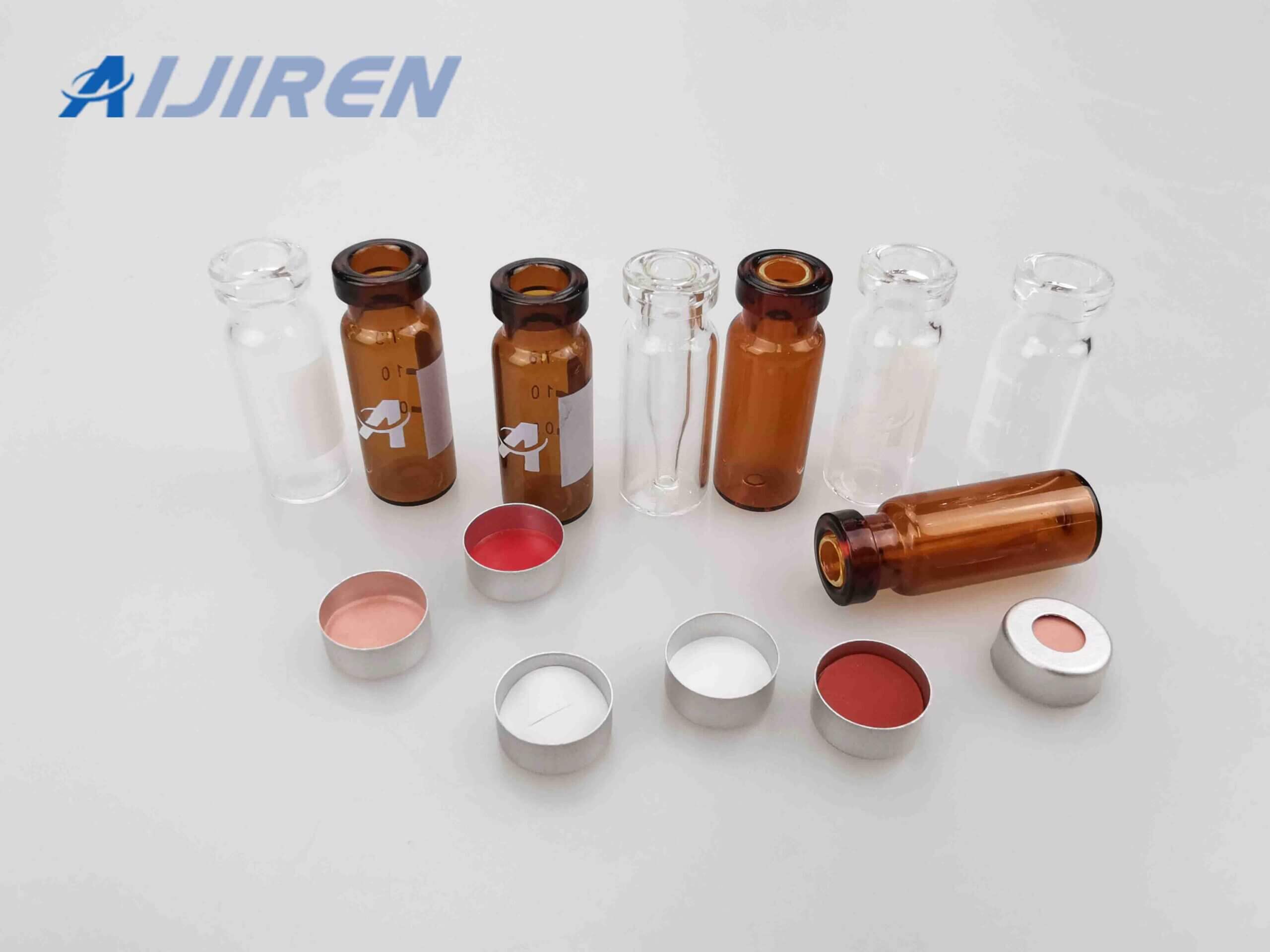How to Clean the HPLC Vials?
There are a lot of methods of cleaning the vials and closures, and here are five of them.

Method 1
1. Rinse the vial with tap water many times
2. Ultrasound for 15 minutes in a beaker with clear water.
3. After changing the water, ultrasound for 15 minutes.
4. Immerse it in water-ethanol in a beaker.
5. Lastly, let the natural air dry the vial.
Method 2
1. Rinse with water before soaking in sulfate potassium chromite lotion.
2. Infiltrate the vial for more than 4 hours with medical alcohol.
3. Ultrasound for half an hour.
4. Pour out medical alcohol.
5. Use water ultrasound for half an hour.
6. Rinse with water after drying it.
Method 3
1. Soak in methanol (pure color spectrum) for 20 minutes. Then do the ultrasonic cleaning, then methanol dry.
2. Fill the chromatographic sample vial halfway with water. Then do the ultrasonic cleaning for 20 minutes and drain the water.
3. Following the drying of the chromatographic sample bottle.

Method 4
1. First, soak for 24 hours in a strong oxidation cleaning solvent (heavy potassium chromate).
2. Then clean three times with deionized water in ultrasonic conditions,
3. Lastly, clean once with methanol. Dry it afterward.
4. You must replace the bottle pad with a new one, especially when assessing pesticide residues. Otherwise, you will indeed affect the quantitative findings.
Method 5
1. Reverse-drying chromatographic sample in-bottle test solution.
2. Soak it in 95% alcohol, wash it twice with ultrasonic, and dry it. You must dry it since alcohol quickly gets into a 1.5mL container and dissolves most organic solvents.
3. Fill with clean water and use ultrasound twice.
4. Pour the lotion into the drying container and bake for 1-2 hours at 110 degrees Celsius. Make sure you’re not baking at a high temperature.
5. Refrigeration and preservation.
It is advisable to get sample vials of clear and amber colors at once when purchasing. For example, your laboratory must complete two projects. The projects are A and B. The A project uses a clear sample vial the first time, whereas the B project uses an amber sample vial. After the test, you clean the vial according to the above method.
In the second experiment, use the amber color for the A project and the clear color for the B project. You can differentiate specific colors corresponding to different items. Also, it can avoid the trouble caused by pollution to your work.
Back to List
-
 下午4:09Weighing the Pros and Cons of PTFE/Silicone Septa
下午4:09Weighing the Pros and Cons of PTFE/Silicone Septa -
 下午4:05Decoding Vial Discard Guidelines: Ensuring Precision in Chromatography
下午4:05Decoding Vial Discard Guidelines: Ensuring Precision in Chromatography -
 下午5:01Navigating Micro Inserts for HPLC Vials: A Comprehensive Guide
下午5:01Navigating Micro Inserts for HPLC Vials: A Comprehensive Guide -
.jpg) 下午2:02Common faults and solutions of automatic samplers(2)
下午2:02Common faults and solutions of automatic samplers(2) -
 下午5:08Ensuring Sample Integrity: Navigating EPA Storage Vials Stability Guidelines
下午5:08Ensuring Sample Integrity: Navigating EPA Storage Vials Stability Guidelines

